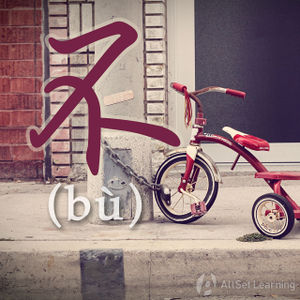Difference between revisions of "Standard negation with "bu""
| Line 69: | Line 69: | ||
{{Used for|Referring to the present}} | {{Used for|Referring to the present}} | ||
{{Used for|Referring to the future}} | {{Used for|Referring to the future}} | ||
| + | {{Used for|Referring to habitual actions}} | ||
{{Basic Grammar|不|A1|不 + V / 不 + Adj|我 <em>不</em> 爱 你 。|grammar point|ASGIPYFV}} | {{Basic Grammar|不|A1|不 + V / 不 + Adj|我 <em>不</em> 爱 你 。|grammar point|ASGIPYFV}} | ||
{{Similar|Negation of "you"}} | {{Similar|Negation of "you"}} | ||
Revision as of 09:44, 22 July 2013
-
Level
-
Similar to
-
Used for
-
Keywords
Use 不 (bù) to negate verbs in the present or future.
Contents
Negating Verbs
Structure
The standard way to negate verbs in Chinese is with 不. To negate a verb, simply place 不 before it:
Subject + 不 + Verb + Object
Examples
- 我 不 是 德国人。I am not a German.
- 他 不 喜欢 你。He does not like you.
- 她 不 喝酒。She doesn't drink beer.
Almost all verbs can be negated with 不 (unless you're talking about the past). The only verb that can never be negated with 不 is 有.
Negating Adjectives
Surprise! The structure is basically the same.
Structure
Subject + 不 + Adjective
Examples
- 我 不 饿。I'm not hungry.
- 他 不 热。He is not hot.
- 这 个 不 够。This is not enough.
See also
Sources and Further Reading
Books
Videos
- Yoyo Chinese: Negation word 不



